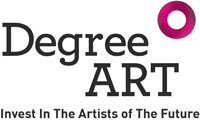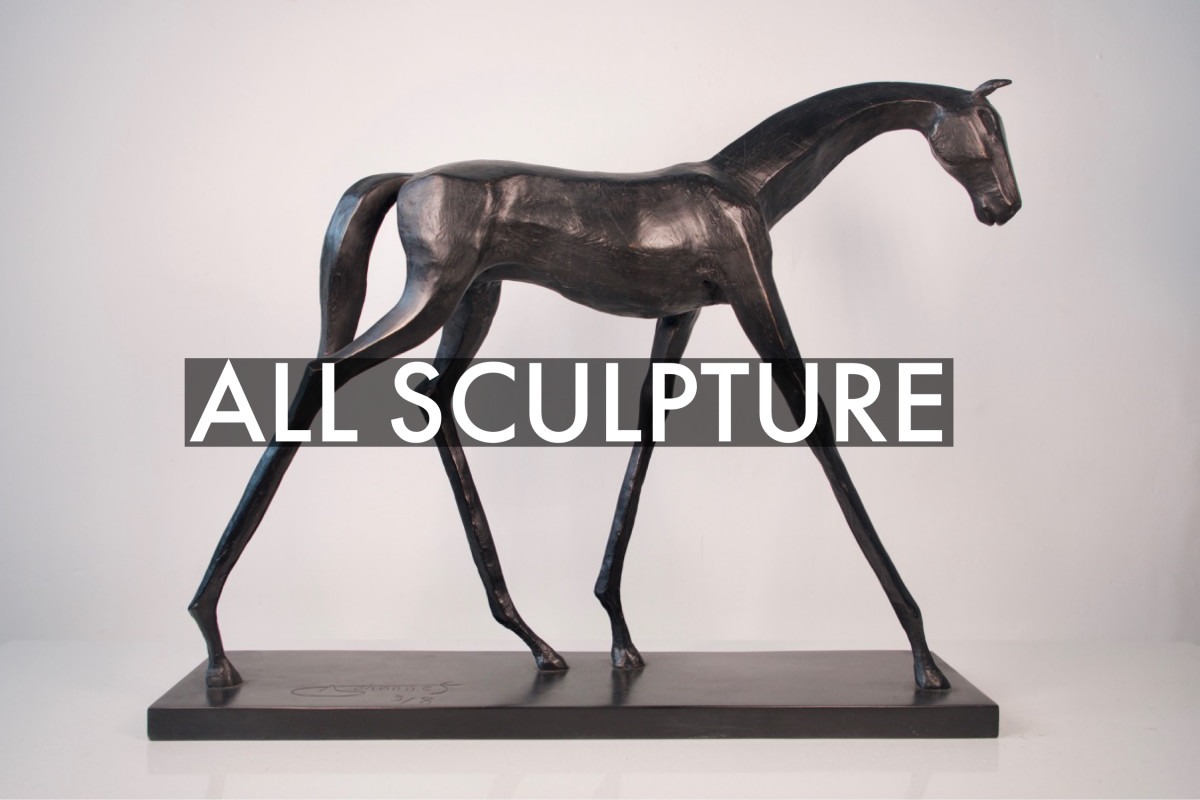Meet the artists that have taken over our Instagram every Thursday in the past month! Showcasing exclusive interviews with Lana Matsuyama, Gareth Griffiths, Charlie Oscar Patterson, Guglielmo Alfarone, and Emmanuel Okoro.
LANA MATSUYAMA
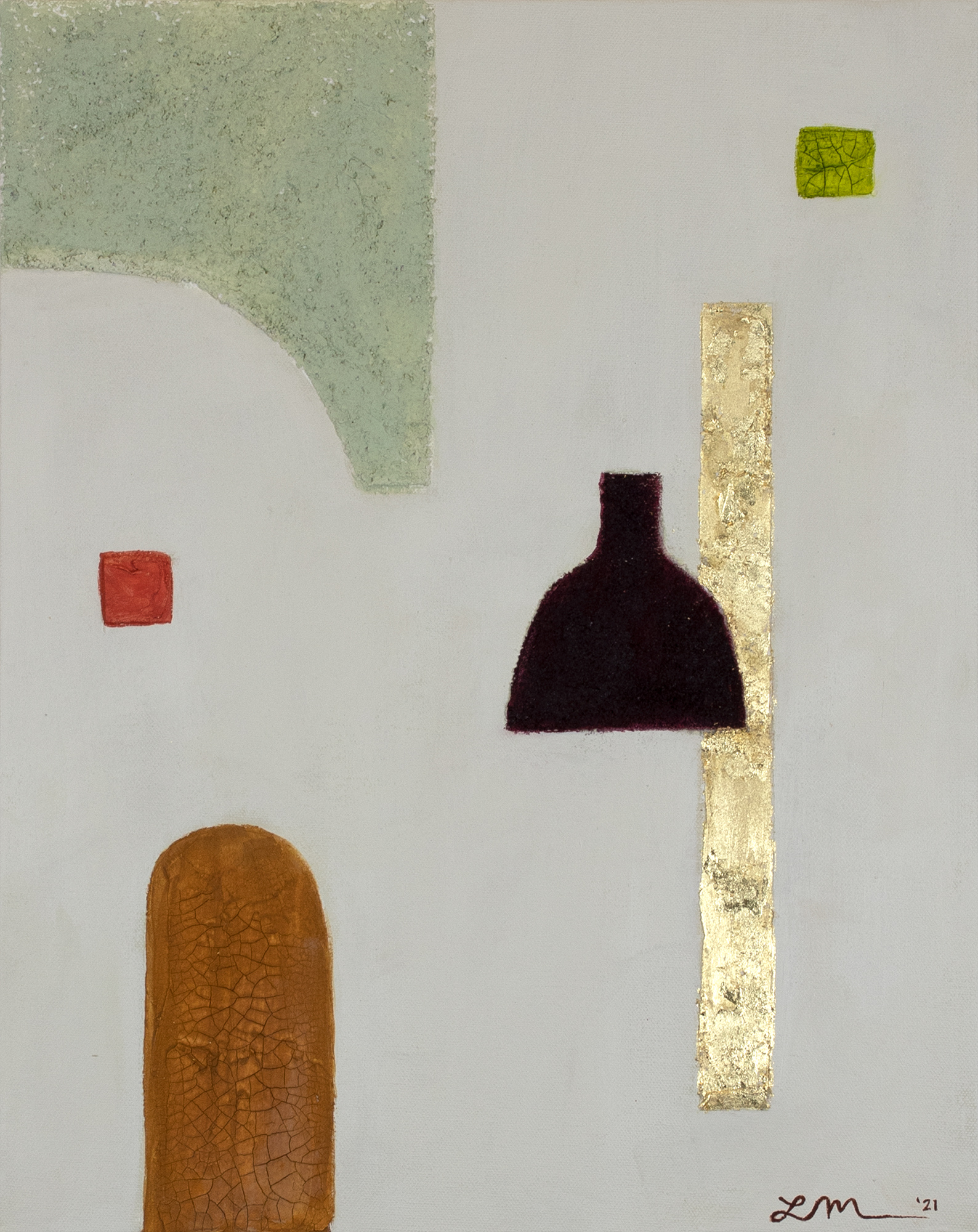
1) Walk me through a typical day in the studio for you?
LM: My favorite days are ones where I can focus solely on making art! A day in the studio starts with layering texture and mediums on my work-in-progress pieces. Since I have to wait a day for each layer of medium to dry, I try to get to that first. Then I usually take a walk with my husband (Ramzi Musa, who is also with Degree Art) and we have lunch. I have a few pieces in different stages going on at once, so in the afternoon I might hop between paintings applying colour, gold leaf or sanding. I also use the afternoon to do sketches, collages and studies to explore new concepts. I love working late at night because of the peace and quiet (as much as I can get here in Dalston!). It allows me to set my own pace, so I sometimes use that time to take pieces further.
2) What is something viewers might not know about your work?
LM: Likely, details about my process. For example, the urban landscape series is influenced a lot by photographs taken whilst traveling or exploring the city. A trip to a Kyoto zen garden, curves in a building in Barcelona, or a broken tile on a stoop might inform my work. Because I come from a graphic design background, I sometimes mock up my paintings in Photoshop after sketching to test out colors and proportions. It’s not uncommon for my graphic design work to inspire my artwork, and vice versa.
3) What is the most challenging part of your process as an artist and what is most rewarding?
LM: Making art to me is really personal, so it’s tough not to let it affect my mood when I have a day where “nothing is working.” Trying to shake that off and pushing through is something I find really challenging. In hindsight, the most rewarding thing is the journey of creating the piece. I try to embrace the process of creating the work, rather than concentrating on the end result (something I have to remind myself continually to conquer the aforementioned “challenge”!)
4) Is there any advice you have for artists/creators during this difficult time?
LM: I'm pretty new to the game, so I'm by no means an expert! But I would say: remember what drove you to become an artist in the first place, and let that help you make decisions in your work. Reminding myself that I create art because it gives me an outlet where I can express myself without having to follow anyone’s rules, helps me stay inspired and motivated to create original work that I love.
GARETH GRIFFITHS

1) Walk me through a typical day in the studio for you?
GG: On a typical day I usually start off by checking my emails, once all my admin has been done I head off into my studio. I start off by tidying up from the day before and work out what jobs I need to do for that day, this could be more welding, polishing, grinding or just tidying up my welds and cleaning the sculptures before they get sent to the powder coaters for a paint job. If I am working on a commission or a new series of work my day could just be sitting in front of my Mac working on some new CAD drawings, ready to be 3d printed.
2) What is something viewers might not know about your work?
GG: My sculptures are inspired by Googie Architecture and are named after Googie buildings or a street/suburb of Los Angeles that a building once stood, I.e norms Restaurant, Burbank, Ships Coffee shop to name a few. My wave/surf sculptures are also named after specific surf spots/waves I.e Mavericks in California, Hout Bay in Cape Town and El Queamo in Lanzarote.
3) What is the most challenging part of your process as an artist and what is most rewarding?
GG: The most challenging part of my process is to get the balance right, most of my sculptures are top heavy and sometimes the base of the sculpture is balanced on 3 points, I want my sculptures to look like they are weightless and falling from the sky. The most rewarding part is when I see the final piece in a clients home proudly displayed.
4) Is there any advice you have for artists/creators during this difficult time?
GG: Keep on making, and make use of social media as much as you can, give yourself small tasks each time you're in the studio, and remember things might have slowed down but people will always need great art in the home or office environment.
CHARLIE OSCAR PATTERSON
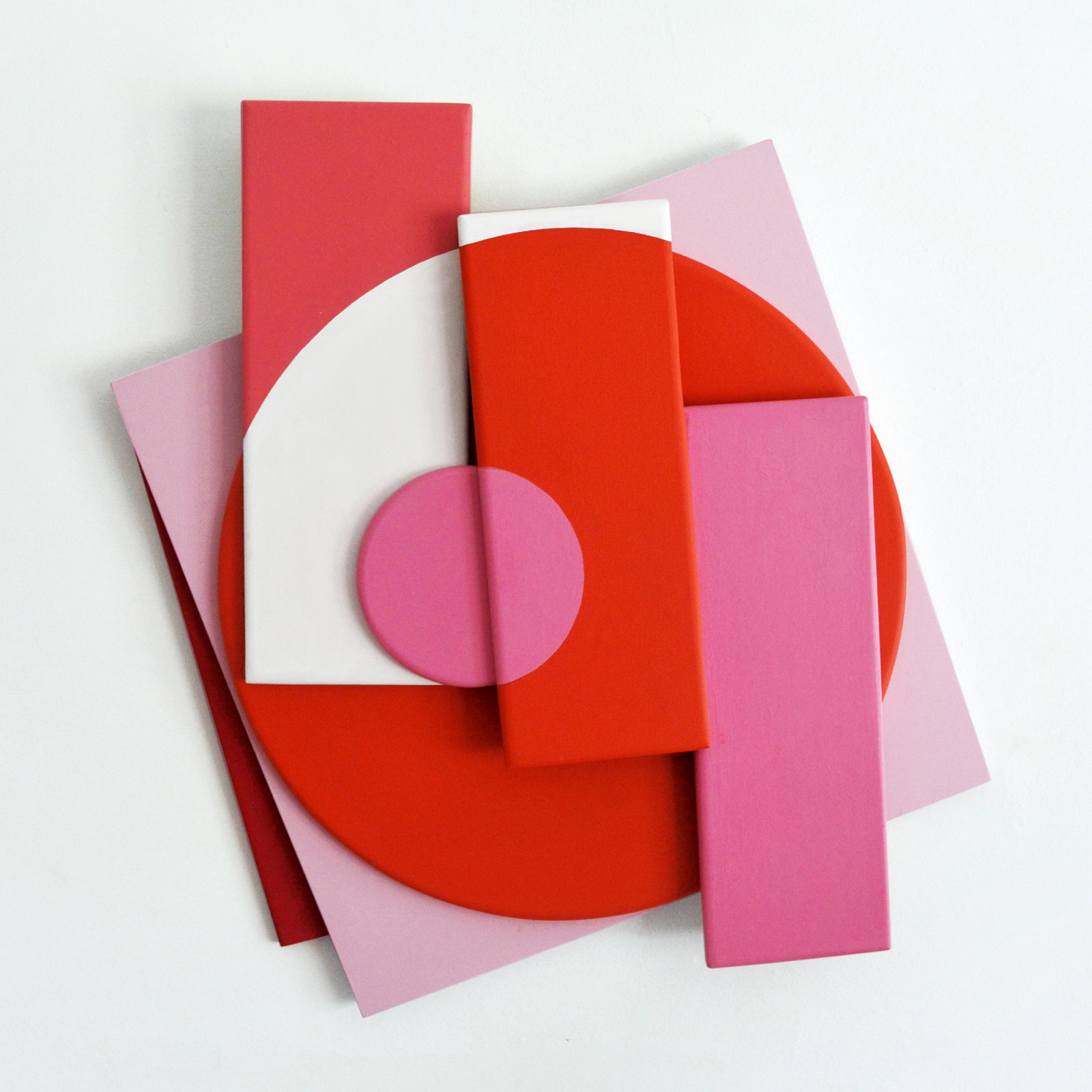
1) Walk me through a typical day in the studio for you?
COP: At the moment I’m in the building stage of making new work for a show in November so my days tend to be measuring and cutting wood. Typically a day either involves building or painting. My new studio is based inside a gardening centre so I’m on the 9-5 work hours but it has its advantages of being surrounded by fish and plants.
2) What is something viewers might not know about your work?
COP: I never preplan the colours in a painting, I always build the piece and then try and figure out what colour will work best, usually a work will be repainted several times before I find a final outcome.
3) What is the most challenging part of your process as an artist and what is most rewarding?
COP: Physically, stretching the canvas over the shaped pieces is probably the most difficult part, it seems to always take a lot longer than you think. The most rewarding part is having a new idea, the moment when you draw or realise a new idea is probably the most exciting element of making work. That and looking back at work a year or so after making it, the time gives you a new perspective.
4) Is there any advice you have for artists/creators during this difficult time?
COP: If you haven’t already check out the #artistsupportpledge. It’s an idea setup by Matthew Burrow at the beginning of lockdown whereby you post images of your work that you are willing to sell for no more than £200, then every time you reach £1000 of sales you pledge to buy another artist’s work for £200. It’s a great way to share your own work and help out other artists.
GUGLIELMO ALFARONE

1) Walk me through a typical day in the studio for you?
GA: Early wake up, coffee, lining up the pictures to choose for the next portraits, and start drawing. Once the portraits of the day are almost done I set them aside and get back to the previous day's work. I need to leave some time before finish a work, so that I can pick up details and volume that may have gone unnoticed while working on it. The final part of the day is normally spent with my camera or computer, doing research and admin.
2) What is something viewers might not know about your work?
GA: Each portrait has a long process behind, tons of pictures to go through before choosing the right one for the drawing, volume of sketches and drafts of projects left behind. While in a video or during my live performances I show only the final stage of my work, is all the process that takes to get into the image I had in mind, that builds the work, that takes the majority of the time and energy.
3) What is the most challenging part of your process as an artist and what is most rewarding?
GA: When a subject comes to my studio for a portrait, the connection created between us is what drives my creativity. Is not just an image, my goal is to represent each sitter from a point of view that might be unknown even for them-self. The challenge is when the drawing may match perfectly the photograph but I don’t feel I captured what I was looking for. The reward is when the sitter discovers a new corner of themselves through my portrait.
4) Is there any advice you have for artists/creators during this difficult time?
GA: This is such an unusual time for all of us, in my generation nowone experience an event of such a large scale and impact that transform completely our life and perception of it. As the event pushed us all out of our comfort zone, I would suggest, as artist, to make sure we reflect the same in our work. Go over your boundaries, test new space and emotion through your work, make sure you translate this phase in to it.
EMMANUEL OKORO
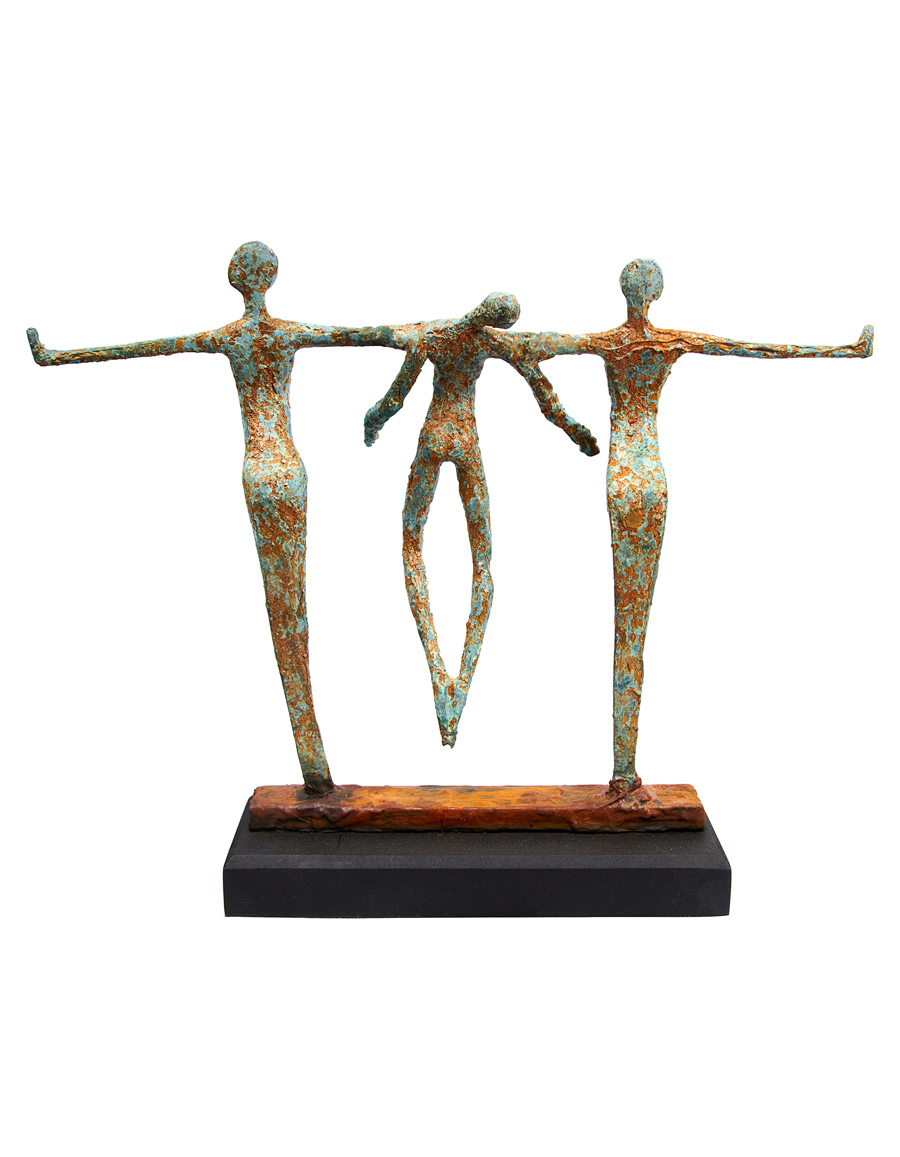
1) Walk me through a typical day in the studio for you?
EO:On a typical day for me in the studio, I spend my morning meditating for one hour before starting work. I meditate by reflecting on, on going works and new ideas. So for the rest of the day, I would either start new styles of working, mould making or finishing up existing new works. No one day is the same.
2) What is something viewers might not know about your work?
EO: What the viewers don’t know about me, is that I am hugely influenced by Rodin’s sculptures and especially “Dante’s divine comedy “ and the romantic stories of Dante and Beatrice. I love me a really good love, betrayals and the death of humanity, stories with tragic endings and emotional entanglement. I am also interested in the betrayal of life, death and the soul's journey to the afterlife.
3) What is the most challenging part of your process as an artist and what is most rewarding?
EO: Some of the most challenging processes of my work are funds, and I somehow have to make sure that the idea in my head matches the steel framed armatures in front of me. There are some impossible ideas that come to my head, at times they feel unimportant but impossible to ignore. So at times, in a random day mainly on a rainy day, I would fall into a trance in the studio and somehow spend a whole day, from about 10am and emerge at about 1 or 2am having created those impossible Sculptural ideas and giving me even more ideas of the physical sculptures in front of me, all in different materials and I would spend months some a few years working and perfecting the lines, and the feeling of the works by adding more humanity within them. “There are times when I spend a whole day in the studio and come out with these impossible sculptural ideas that give me even more inspiration for future materials and concepts I can use to add more humanity to the finished product” I will spend months and even years working and perfecting the lines and details in my sculptures.' Each sculpture carries within it, it’s own story of struggles in its movement, it’s pain as it tries to please you with the pain in its ever stretching, Tweeting forms. The escapism from its presence.
4) Is there any advice you have for artists/creators during this difficult time?
EO: My advice would be to trust the process, trust your own ideas, for only believing would you trust yourself. It’s always hard at the beginning, but by playing and destroying can you really live and connect to what really wants to come out of you.
